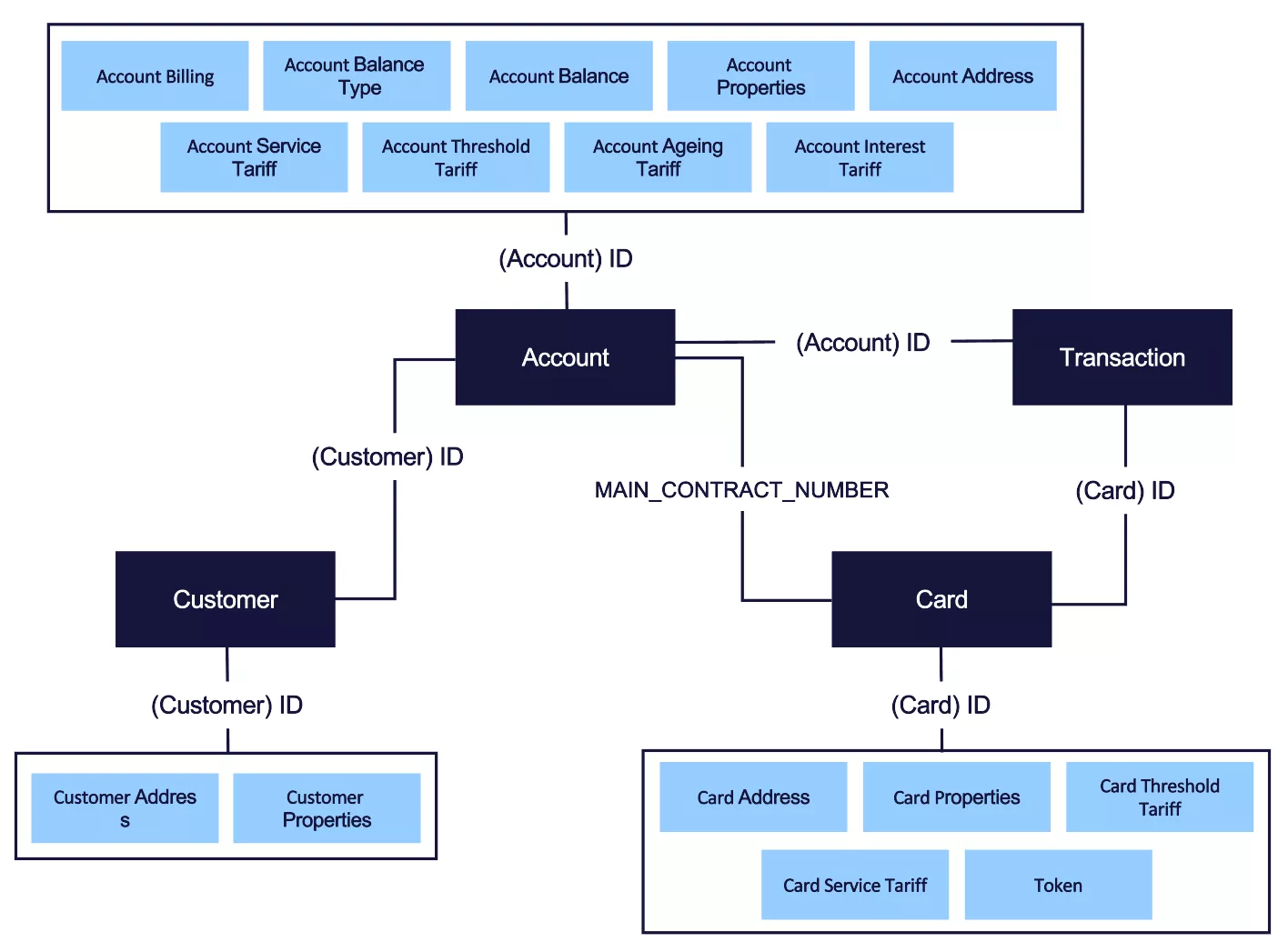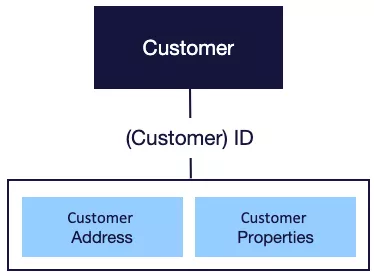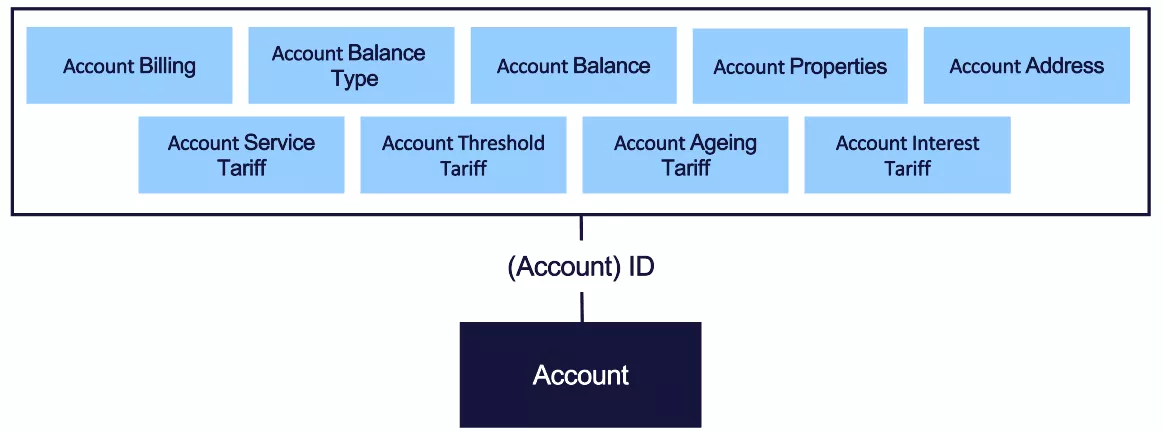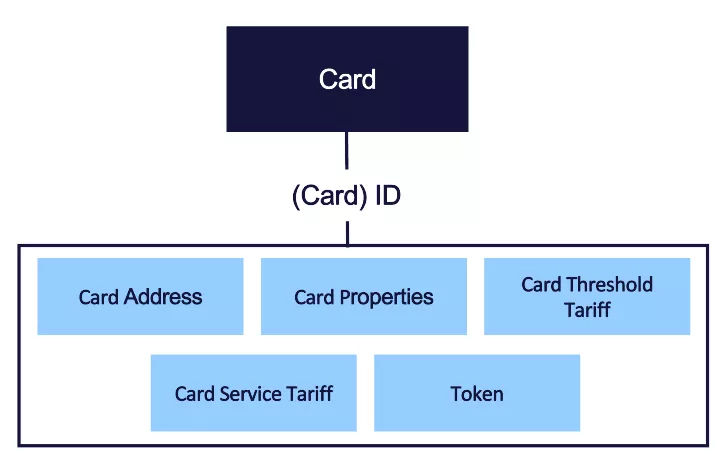Enfuce data export files
Introduction to data export
Data export files are a set of files which are exported from the Enfuce data warehouse for the issuer. The target of the files is to provide the issuer with a source of data that will enable the in-house creation of reports and load data to an internal data warehouse for further use.
The files are incremental and do not contain all accounts, cards and customers every day. Instead, they include changes to account, card and customer that have been recorded the previous day.
The data export is a generic solution that is designed to fit different types of payment instruments (credit, debit, consumer, corporate, fleet cards, etc.) and has some data fields that are not relevant in every setup. This means there might be data that you don’t find useful at this point. Our data files are based on our conviction that all (non-sensitive) data should be available even if use cases are not identified and we don’t know how you intend to use the data. What you’d like to take for further analysis now or in the future is up to you.
The files are encrypted by default and available on the Enfuce SFTP for 45 days. During implementation, a designated folder “data_warehouse” is set up for these files.
This guide will now describe the different files, the content of each file and the delivery process.
Export files
The files are divided into four logical entities:
- Customer – Data related to the cardholder/customer/payment instrument user
- Account – Data related to the account that is linked to the card and customer.
- Card – Data related to the plastic/virtual card
- Transaction – data about transactions posted to card and account
Each of these entities includes 1-10 files. The number of files is determined by the amount of functionality and parameters that are linked to each entity in question and can vary depending on the setup.
The following chapters describe the files within and the logical content. Also, the data content and links between the files and entities are described in detail.
Links between entities
The picture below visualises the different entities and what the links are between the entities.

Customer files
The customer entity consists of three files:
- Customer file
- Customer address file
- Managing token lifecycle
- Customer properties file

The Customer file includes basic information about the customer, like name, ID, language preference, when the customer has been created, and deceased date. The customer can be a physical person, but they can also be an object (e.g. company/department/vehicle).
The Customer address file contains the contact information for your customer. The system supports contact information on several levels, but the Customer address is the only mandatory field. It is the field the system will always default to if other address types are not utilised.
The Customer properties file contains the properties of your customer. Customer locale is an example of customer properties.
Account files
The account entity consists of ten files:
- Account file
- Account Address file
- Account Properties
- Account Balance
- Account Balance type
- Account Tariff ageing
- Account Tariff interest
- Account Tariff service
- Account Tariff threshold
- Account Billing

The Account file includes basic information about the account like account number, credit limit and open date.
The Account Address file contains the contact information for the account. The system supports contact information on several levels, and the account level address/contact information is used as a statement address if present.
The Account Properties file contains the properties of the account if such exist. An example could be delinquency level, i.e. how long the account has been overdue.
The Account Balance file contains information about the balance of the single analytical financial account.
The Account Balance type file contains the balance of the predefined balance types.
The Account Tariff ageing file contains tariffs that are related to ageing, i.e. related to balances moving from not invoiced to invoiced to overdue. These are usually defined on the product level but can also be on the account level if customer-specific exceptions are allowed. An example would be a customer-specific minimum to pay.
The Account Tariff interest file contains tariffs that are related to interests. In other words, the different interest rates that are applied. As with the ageing tariffs, these are also usually defined on the product level but can also be on the account level if customer-specific exceptions are allowed.
The Account Tariff service file contains tariffs that are related to services, which refers to fees that are set up in the system. These are usually defined on the product level but can also be on the account level if customer-specific exceptions are allowed.
The Account Tariff threshold file contains tariffs that are related to thresholds. One example could be if a shadow limit is set then the percentage or amount of the shadow limit would be reflected in this file. These are usually defined on the product level but can also be on the account level if customer-specific exceptions are allowed.
Account Billing file includes basic data of the billing cycle. More detailed information (e.g. included transactions) is available in the statement file copy.
Card files
The card entity consists of six (6) files:
- Card file
- Card Address file
- Card Properties
- Card Tariff service
- Card Tariff threshold
- Token

The Card file includes basic information about the card like Card ID, expiration date, open date and status.
The Card Address file contains the contact information for the card. The system supports contact information on several levels, and the card level address/contact information is used in card and PIN delivery if present.
The Card Properties file contains the properties of the card if such exist. An example is segments that can be set on a card level.
The Card Tariff service file contains tariffs that are related to services, which refers to fees that are set up in the system. These are usually defined on the product level but can also be on the card level if customer-specific exceptions are allowed.
The Card Tariff threshold file contains tariffs that are related to thresholds. These are usually defined on the product level but can also be on the account level if customer-specific exceptions are allowed.
The Token file includes information about tokens that have been created for the card.
Transaction files
The card entity consists of one file.
Transaction
The transaction file contains each financial transaction posted during the previous day.
